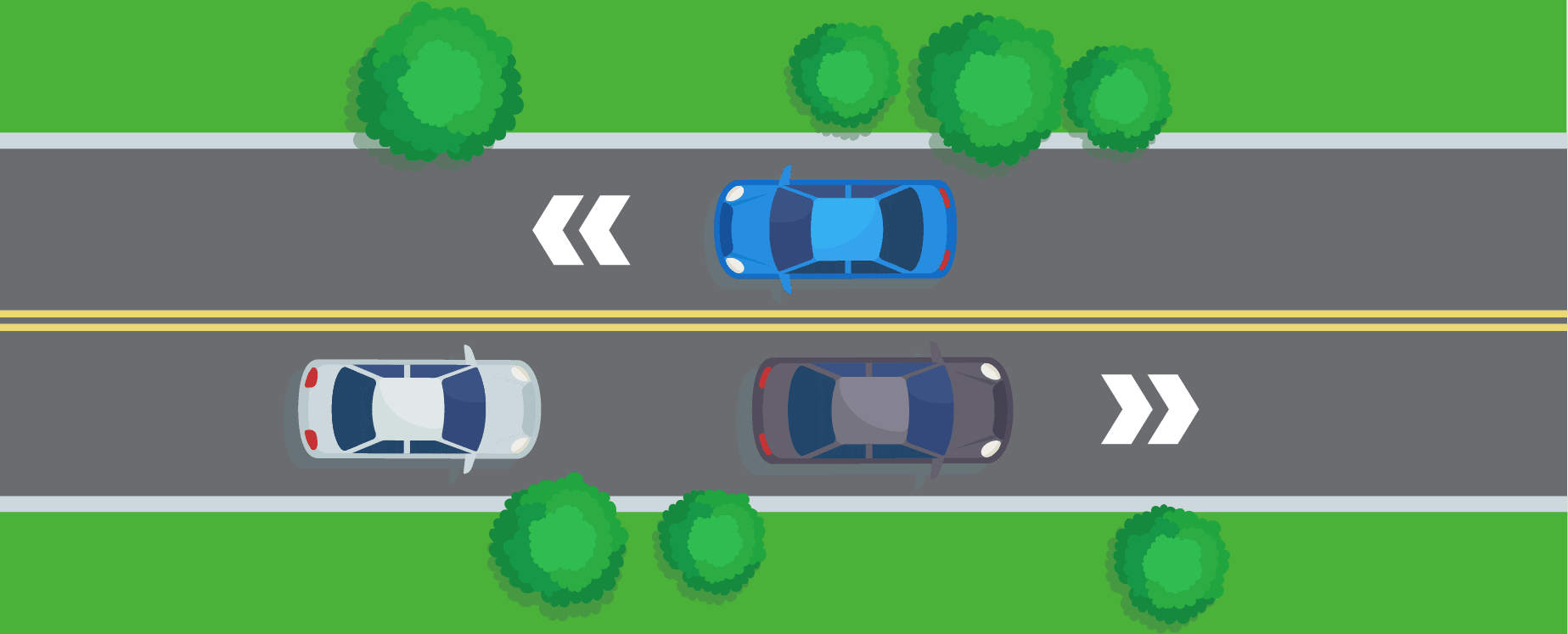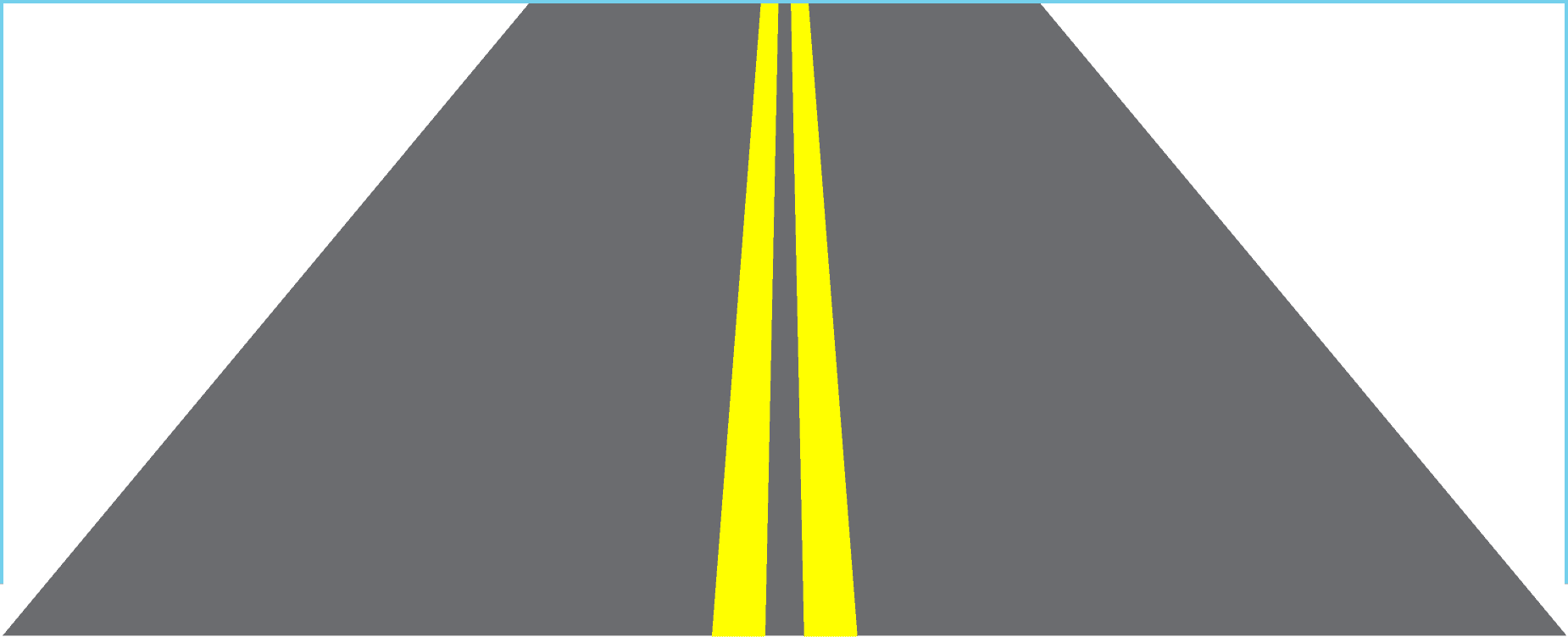It is important to understand pavement markings because they tell you the direction of traffic like one-way traffic or two-way traffic. Pavement markings also tell you where you may and may not travel on the road. Pavement markings also give you important information about turning lanes and pedestrian crossings.

Yellow Lines Indicate Trafiic Moving in the Opposite Directions

White Lines Indicate Traffic is Moving in the Same Directions
Yellow Lines Indicate Traffic is Moving in Opposite Directions

Broken line: Passing is permitted

Double solid line: Passing is not safe for traffic going either way.

Solid and broken line: Passing is not safe if the solid line is on your side of the highway.
White Lines Indicate Traffic is Moving in Same Directions

Broken line: Passing is permitted.

Solid line: Passing is not safe.

